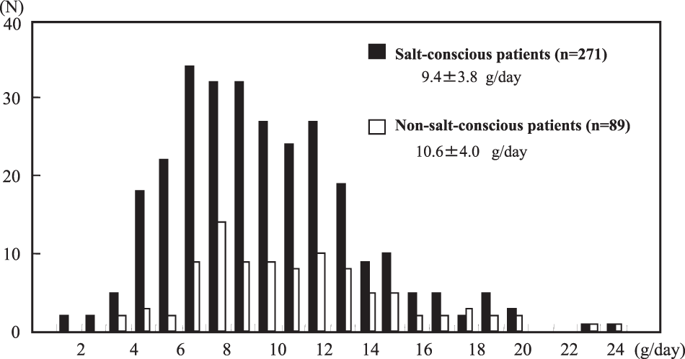当前位置:
X-MOL 学术
›
Hypertens. Res.
›
论文详情
Our official English website, www.x-mol.net, welcomes your feedback! (Note: you will need to create a separate account there.)
Practical and personal education of dietary therapy in hypertensive patients
Hypertension Research ( IF 5.4 ) Pub Date : 2019-10-01 , DOI: 10.1038/s41440-019-0340-5 Takuya Tsuchihashi 1
Hypertension Research ( IF 5.4 ) Pub Date : 2019-10-01 , DOI: 10.1038/s41440-019-0340-5 Takuya Tsuchihashi 1
Affiliation

|
The guidelines for the management of hypertension by the Japanese Society of Hypertension (JSH2019) defined blood pressure (BP) levels of 130–139/80–89 mmHg as “elevated blood pressure”. The JSH2019 also revised the target level of BP control to a lower level. Thus, lifestyle modifications are quite important regardless of the use of antihypertensive drugs. Among the lifestyle modifications, salt reduction is most important, especially among East Asian people, who still consume a significant amount of salt. Since the awareness of salt reduction may not necessarily lead to actual salt reduction, the assessment of individual salt intake is essential when members of the medical staff provide practical guidance regarding salt reduction. The evaluation methods of salt intake are classified as the assessment of dietary contents and the measurement of urinary sodium (Na) excretion. Since highly reliable methods, such as the measurement of 24-h urinary Na excretion, are not convenient in practical clinical settings, the combination of the assessment of dietary contents using questionnaires and the estimation of salt intake using spot urine is recommended as a practical evaluation procedure. Repeated assessment of salt intake and practical guidance from dieticians are useful for long-term adherence to salt reduction. The Japanese Society of Hypertension Salt Reduction Committee began to certify flavorful foods as being low in salt content in 2013. More than 200 products have been certified as of April 2019. The utilization of these products is expected to aid in the salt reduction of hypertensive individuals as well as the Japanese general population.
中文翻译:

高血压患者饮食疗法的实践和个性化教育
日本高血压学会 (JSH2019) 的高血压管理指南将血压 (BP) 水平定义为 130–139/80–89 mmHg 为“血压升高”。JSH2019 也将 BP 控制的目标水平修改为较低的水平。因此,无论是否使用抗高血压药物,生活方式的改变都非常重要。在生活方式的改变中,减盐是最重要的,尤其是在仍然消耗大量盐分的东亚人中。由于减盐意识不一定会导致实际减盐,因此在医务人员提供减盐实用指导时,评估个人盐摄入量是必不可少的。食盐摄入量的评价方法分为膳食含量评价和尿钠(Na)排泄量测定。由于高度可靠的方法,如测量 24 小时尿 Na 排泄量,在实际临床环境中不方便,建议结合使用问卷评估膳食含量和使用点尿估算盐摄入量作为实际评估程序。反复评估盐摄入量和营养师的实际指导对于长期坚持减盐很有用。日本高血压学会减盐委员会于 2013 年开始对咸味食品进行低盐认证。截至 2019 年 4 月,已有 200 多种产品获得认证。
更新日期:2019-10-01
中文翻译:

高血压患者饮食疗法的实践和个性化教育
日本高血压学会 (JSH2019) 的高血压管理指南将血压 (BP) 水平定义为 130–139/80–89 mmHg 为“血压升高”。JSH2019 也将 BP 控制的目标水平修改为较低的水平。因此,无论是否使用抗高血压药物,生活方式的改变都非常重要。在生活方式的改变中,减盐是最重要的,尤其是在仍然消耗大量盐分的东亚人中。由于减盐意识不一定会导致实际减盐,因此在医务人员提供减盐实用指导时,评估个人盐摄入量是必不可少的。食盐摄入量的评价方法分为膳食含量评价和尿钠(Na)排泄量测定。由于高度可靠的方法,如测量 24 小时尿 Na 排泄量,在实际临床环境中不方便,建议结合使用问卷评估膳食含量和使用点尿估算盐摄入量作为实际评估程序。反复评估盐摄入量和营养师的实际指导对于长期坚持减盐很有用。日本高血压学会减盐委员会于 2013 年开始对咸味食品进行低盐认证。截至 2019 年 4 月,已有 200 多种产品获得认证。



























 京公网安备 11010802027423号
京公网安备 11010802027423号